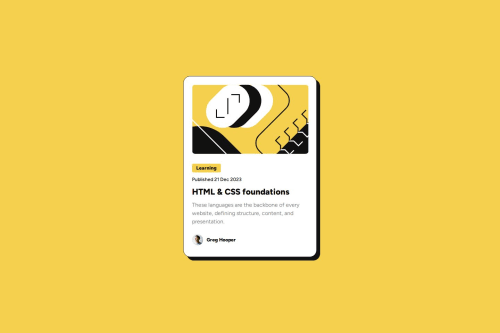Blog Preview Card Challenge Solution

Solution retrospective
I'm proud that i spend most of my time with the CSS instead of HTML, i was way more comfortable to think the structure just by looking at the example.
What challenges did you encounter, and how did you overcome them?One of the main problems that i had was positionating elements exactly where i want. Especially the space between the footer and the resume paragraph. I did think in a way to put the footer 24px away from the bottom using the row-gap property. Even when the space isn't exactly the same that the one in the design, i'm still pretty happy with the results, and looking forward to improve the code in the future.
What specific areas of your project would you like help with?I want to know more about in which cases use margin or padding (even knowing the definitions in the practice in some cases i'm a little indecisive about which one should i use). Also, would like to know how to improve the CSS code and reduce the amount of lines or selectors to create the same results with the minimum amount of code possible
Please log in to post a comment
Log in with GitHubCommunity feedback
No feedback yet. Be the first to give feedback on 6xg0d's solution.
Join our Discord community
Join thousands of Frontend Mentor community members taking the challenges, sharing resources, helping each other, and chatting about all things front-end!
Join our Discord